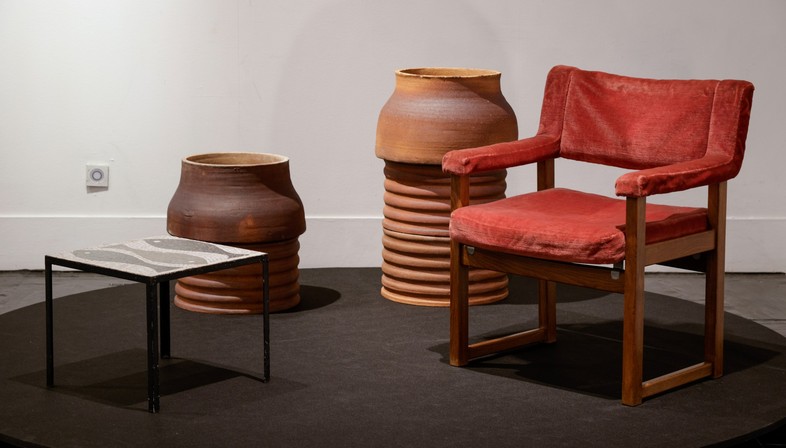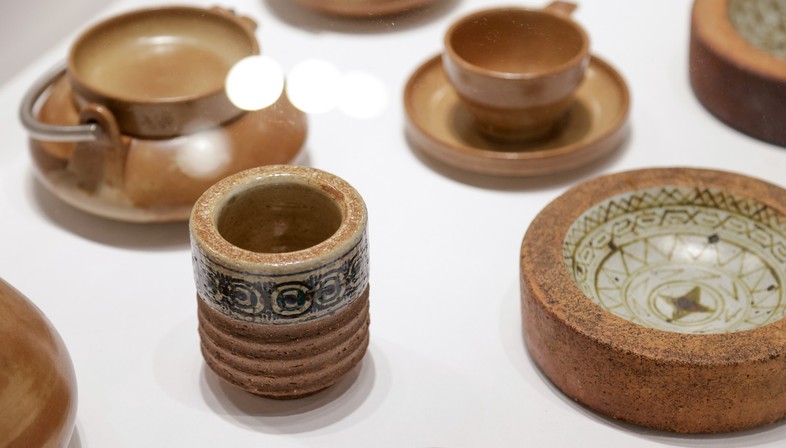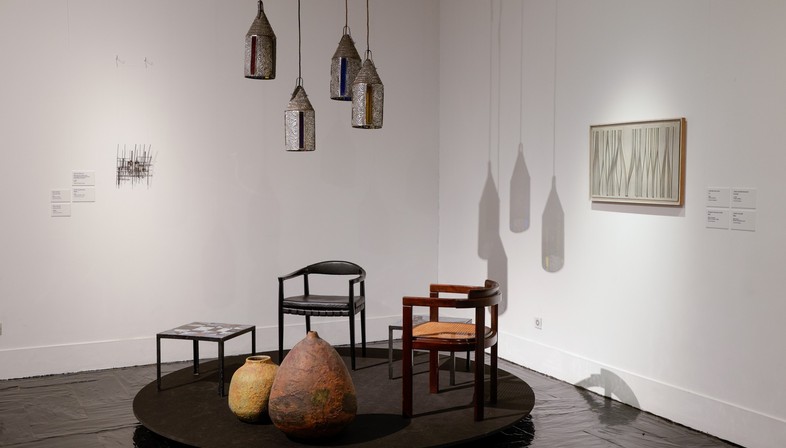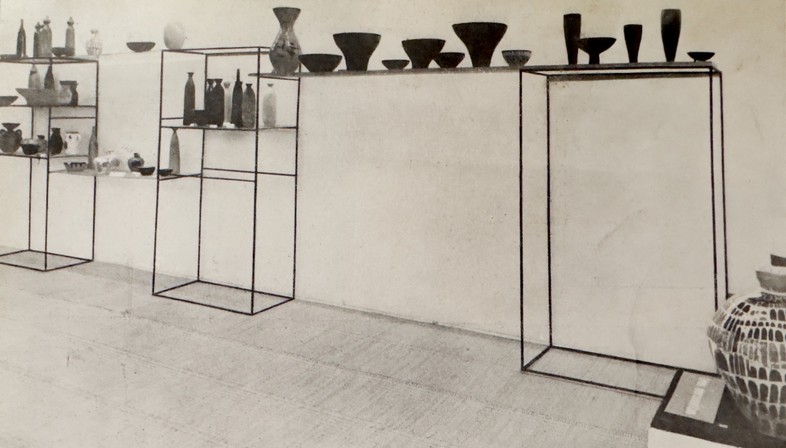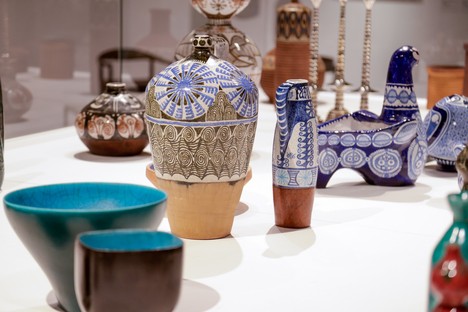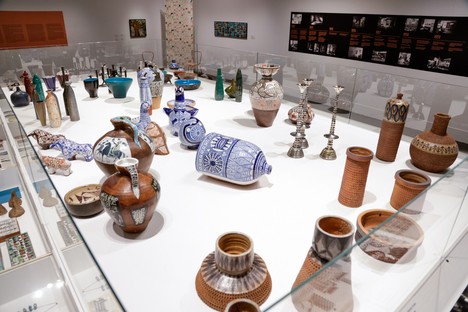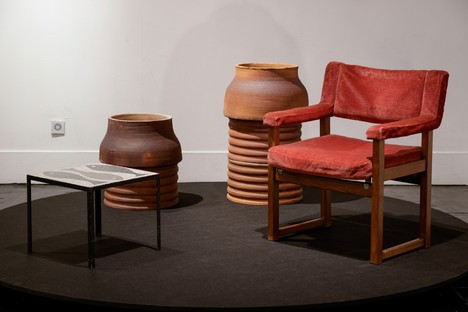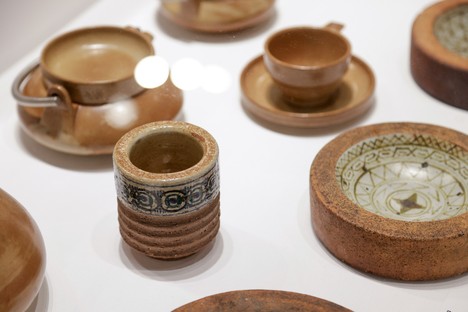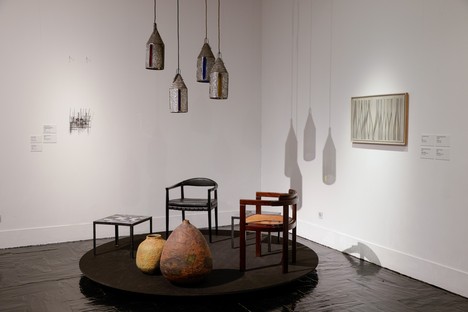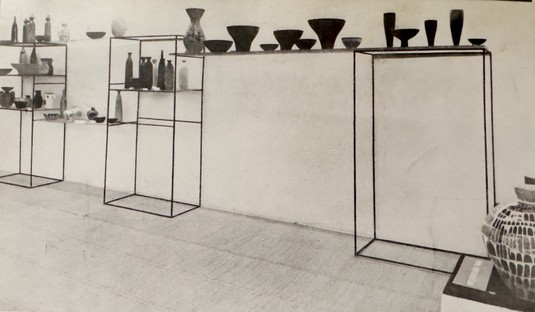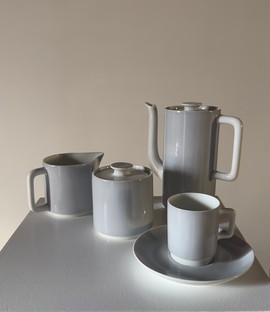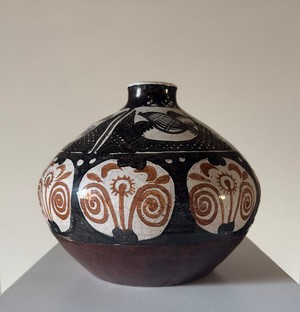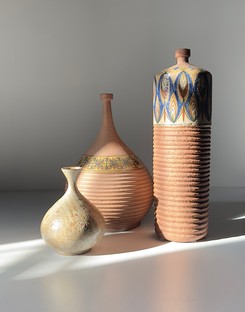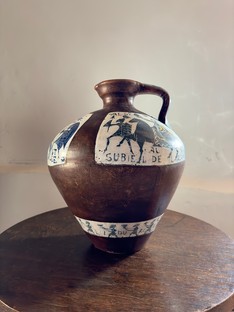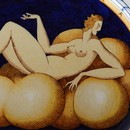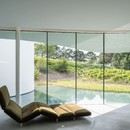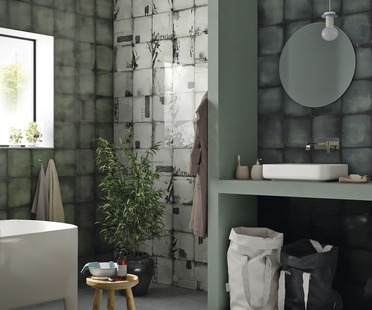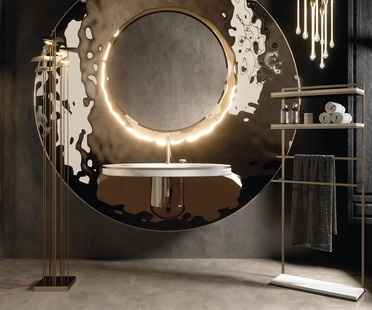08-03-2023
The fifties in Madrid: design meets ceramics
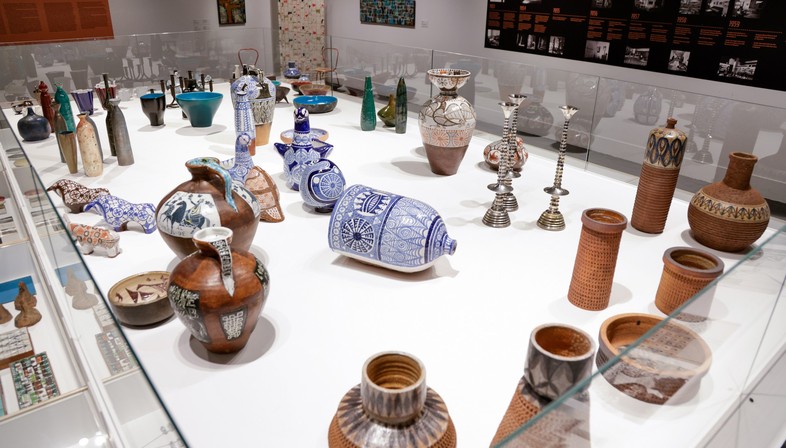
The many initiatives under way during the Madrid Design Festival MDF23 include an interesting exhibition drawing on historical research, ‘Madrid, alfar de modernidad. Cerámica y diseño a mediados del siglo XX’, set up at Fernán Gómez Centro Cultural de la Villa, a large space for the arts that will host the main exhibitions in the event between February and April. Though less high-impact than other events such as the group exhibition ‘Madre Natura’, or the one focusing on the host city, Seville (‘Sevilla. Sombra iluminada’), the exhibition ‘Madrid, alfar del modernidad’ is a little jewel casting light on an entirely new theme: the arrival of the principles of modernity in Spain thanks to the initiative of a small group of designers and architects who attempted to shake the dust off the nation’s antiquated aesthetic between the fifties and the late sixties. To do this without falling foul of the tight mesh of Francoism, they applied design to handcrafted ceramics. The exhibition brings together a large core collection of ceramics, with the addition of furnishings, carpets, armchairs, lamps, graphic works and sculptures designed by the people who attempted the endeavour, including José Luis Sánchez, Jacqueline Canivet, Arcadio Blasco, Luis M. Feduchi, Javier Carvajal, and Paco Muñoz, with the addition of designers including Antonio Fernández Alba, Miguel Fisac, Javier Feduchi, Luis Feito, José María de Labra, Carmen Perujo, and Antonio Salvador Orodea, among others.
The title of the exhibition, curated by Pedro Feduchi and Pedro Raula, identifies the movement’s lifeblood: the alfar, Spanish for the ceramist’s workshop. At that time the area of experimentation with the traits of modernity was the ceramic workshops of Madrid, places of dialogue and experimentation, as Pedro Raula reports: “A movement made way for itself in the Madrid of the fifties that attempted to keep up with modernity, beginning with handcrafting and design. The exhibition includes ceramic items but also furnishings, lamps and paintings created by the artists who participated in the movement, items with a bold decorative and industrial vision.” At that time, academicism imposed a clearcut separation between the disciplines of design, the decorative arts, and crafts. What those young designers learned abroad, primarily in Paris, was the commingling of these disciplines, which led them to the world of ceramics and the possibility of experimenting with forms and techniques, enamels and decorations. When they came back to Spain, under the leadership of Luis M. Feduchi, they renewed ceramic production, which had until then wearily reproduced traditional models, with experimentation in items for use in the home, from cups to vases, jugs and tea sets, applying the principles of modernity and, above all, the methods of design.
Also in Madrid, in 1958, Luis M. Feduchi founded SEDI (Sociedad de Estudios para el Diseño Industrial) to lay the foundations of industrial design in Spain. The experimentation continued, with the involvement of a number of women designers, very rare at the time, until the group’s work appeared in the Spanish Pavilion at the World’s Fair in New York in 1964. After this there was an attempt toward commercial development of production, but it did not succeed, far removed as it was from the tastes of the day, still anchored to traditional stylemes.
But the seed had been planted, and many trace the birth of contemporary Spanish design to those years of experimentation and innovation in ceramic materials. “The exhibition is located at the intersection between design and ceramics”, explains the other curator, Pedro Feduchi; “what we wanted to do was illustrate the work of a generation that has been underestimated, but actually played a crucial role in the history of industrial design in Madrid. Craftsmanship and design are the two disciplines whose paths crossed in the fifties; the exhibition casts light on their aesthetic evolution until the seventies, at a time when they shared the milestones of their evolution”.
Antonella Galli
Captions
Madrid, alfar de modernidad. Cerámica y diseño a mediados del siglo XX
At Fernán Gómez Centro Cultural de la Villa
Until 9 April 2023
Curators and exhibition design: Pedro Feduchi and Pedro Raula
All photos: courtesy of Madrid Design Festival MDF23
01-05 Exhibition installations
06 Image of the 3 Ceramistas exhibition held at Madrid University (1957). Ceramics by Jacqueline Canivet, José Luis Sánchez and Arcadio Blasco
07 José María de Labra. Majolica coffee set, made by Bidasoa (1959/1960). Ph. Pedro Reula
08 Arcadio Blasco and Carmen Perujo. Enamelled ceramic and leather vase (1960). Ph. Pedro Reula
09 Antonio Salvador Orodea (ASO). Enamelled porcelain stoneware vases. Ph. Pedro Reula
10 Arcadio Blasco. Enamelled ceramic and leather jug (1956/1957). Ph. Pedro Reula










